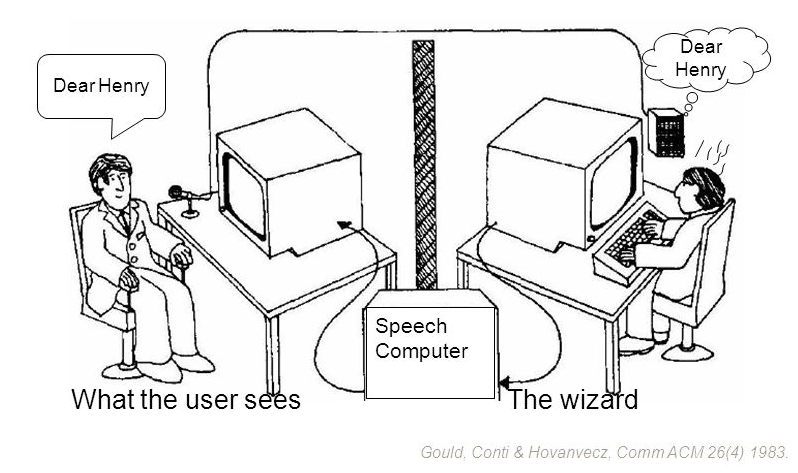# Wizard of Oz prototype
- Purpose
- Test functionalities before they exist
- Time required
- From 1 hour to 1 day
- Participants
- Usability/UX tester, user
- Level of experience
- experienced

# Summary
Wizard of Oz prototypes allow you to test functionalities that have not yet been implemented. The user only tests a simulation of the actual functionality. Instead of the real functionality, the "Wizard of Oz" pulls the strings in the background.
# Result
The aim of the method is to save time and money and instead to first proof, which functionalities are necessary.
# Approach
- Determine which functionality should be tested.
- Consider how you can realistically simulate this functionality.
- You can combine different tools such as tablets, email systems and PowerPoint with human intervention.
- Run the tests and observe the behavior of the users carefully.
# Time of use
Wizard of Oz prototypes are often used for the simulation of digital systems.
# Tools and Templates
- various (digital) tools for the creation of the prototype
# Advantages
The Wizard-of-Oz method enables realistic interaction between test subjects and the autonomous system. This test procedure can be carried out in a cost-effective and agile manner, and the context of the investigation can be expanded as required.
# Disadvantages
Involving and training a wizard adds resource costs, and in the wizard's role, it is difficult to provide consistent responses across sessions. This is primarily because the wizard's response can change over time, mainly due to cognitive fatigue. In addition, when a research staff member plays the role of the wizard, there is a risk that he or she will improvise beyond programmed behavior.
# Hints
Testing with the Wizard of Oz prototypes is more useful, when the test situation feels natural to the test user.
# Sources
- Curedale: Design Thinking: process and methods manual (opens new window) Design Community College Inc. ISBN: 9780988236240.
- Design Thinking Bootleg (opens new window) Hasso Plattner Institute of Design at Stanford University.
- Wizard-of-Oz (German) (opens new window) TU Darmstadt
- Wizard of Oz-Prototyping - Methodenkarte des Mittelstand 4.0-Kompetenzzentrum Usability (German) (opens new window)